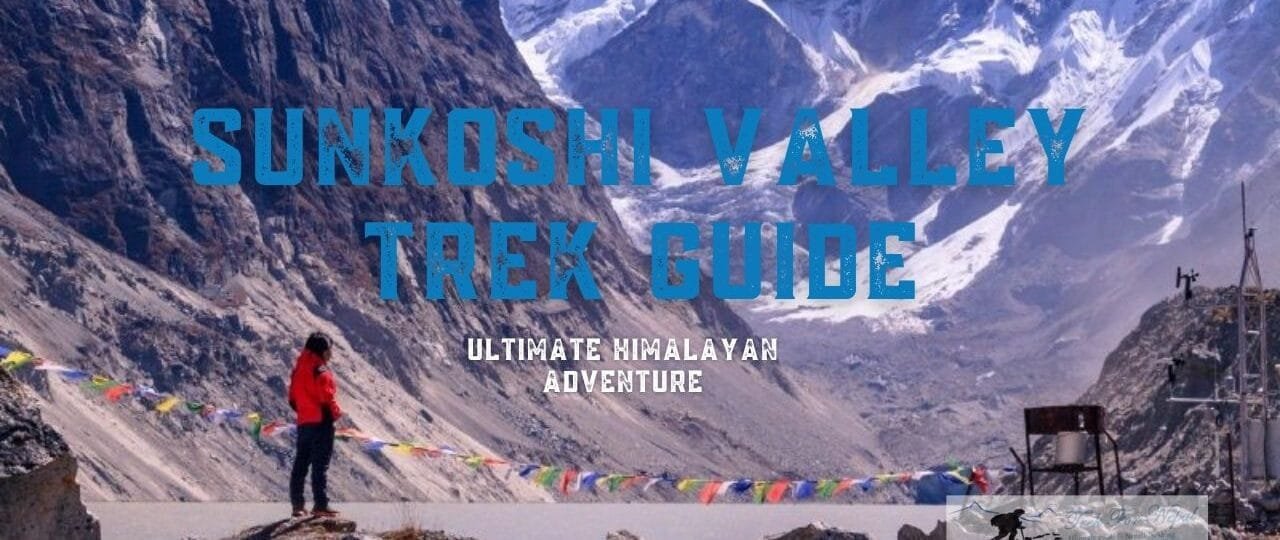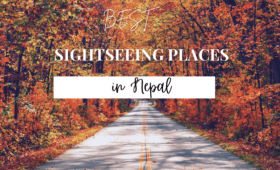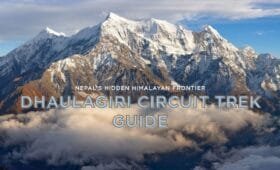The Sunkoshi Valley Trek is a remarkable journey that unveils a hidden world of pristine landscapes, remote villages, and captivating cultural encounters in Nepal. If you’re planning a Himalayan expedition, the Sunkoshi Valley Trek offers an immersive, challenging, and rewarding adventure. This comprehensive Sunkoshi Valley Trek guide will explore every aspect of the Sunkoshi Valley Trek itinerary, including cost, distance, difficulty, permits, maps, weather, and much more. Whether you’re a seasoned trekker or a first-timer, this article will provide you with insights on planning your trek confidently and precisely.
From practical budgeting tips to inspiring testimonials and actionable advice, our Sunkoshi Valley Trek guide is crafted to help you navigate the intricacies of the Sunkoshi Valley Trek. By the end, you’ll be well-prepared for an adventure that enriches your spirit and supports community empowerment through Volunteers Initiative Nepal (ViN), where every trek contributes to sustainable development and local progress.
1. Introduction: Discover the Wonders of the Sunkoshi Valley Trek
The Sunkoshi Valley Trek is an adventure like no other. It takes you deep into the heart of Nepal, where lush valleys and rugged mountain terrain form an awe-inspiring backdrop. This trek is celebrated for its breathtaking scenery, diverse flora and fauna, and the chance to experience the unique lifestyle of remote Himalayan communities.
The trek’s appeal lies in its natural beauty and cultural authenticity blend. The Sunkoshi Valley Trek Itinerary is designed to be flexible, offering options that suit different fitness levels and trekking experiences. As you journey through the valley, you will encounter serene villages, ancient monasteries, and terraced fields that tell the story of Nepal’s rich heritage.
“Trekking through the Sunkoshi Valley was transformative. The natural beauty and warm hospitality of local villagers made every step memorable. I returned home with stunning photographs and a deeper understanding of Himalayan life,” shares Prakash, a veteran trekker from India.
This adventure is perfect for those who want to escape the hustle of Kathmandu and immerse themselves in a quieter, more reflective environment. The moderate altitude and well-marked trails make the Sunkoshi Valley Trek accessible to many trekkers, while its remote location ensures an authentic experience away from the more crowded routes. This Sunkoshi Valley Trek guide will discuss key elements such as the Sunkoshi Valley Trek Cost, Sunkoshi Valley Trek Difficulty, and the essential Sunkoshi Valley Trek Map details, helping you plan your journey step by step.
2. Historical and Cultural Context
2.1 The Legacy of the Sunkoshi Valley
The Sunkoshi Valley is steeped in history. Traditionally, it has served as a vital corridor for trade and cultural exchange between Nepal and Tibet. Its rich heritage is reflected in ancient monasteries, age-old traditions, and vibrant local festivals. The valley’s story is interwoven with the lives of the Indigenous communities that have thrived in this remote region for centuries.
The Sunkoshi Valley Trek allows trekkers to witness this living heritage firsthand. Along the route, you will encounter centuries-old stupas, prayer flags fluttering against the crisp mountain air, and intricate carvings that tell tales of devotion and history. These cultural markers enrich your journey, offering insights into the region’s spiritual and historical significance.
2.2 Cultural Immersion and Community Life
The cultural aspect of the Sunkoshi Valley Trek is as captivating as its landscapes. Local communities in the valley, predominantly of Tibetan and Sherpa descent, continue to practice traditions passed down for generations. As you trek, you can interact with locals, sample traditional foods, and participate in cultural events.
“The people in the Sunkoshi Valley welcomed us with open arms. Their stories, traditions, and the simple beauty of their lives truly enriched my trekking experience,” recalls Mingma, a volunteer guide from Nepal.
This interaction is a cornerstone of the trek. The immersive experience lets you learn about local customs, religious practices, and the symbiotic relationship between the people and their environment. Whether you are exploring ancient monasteries or resting in a teahouse, every encounter adds a layer of depth to your adventure.
3. Detailed Itinerary: Your Sunkoshi Valley Trek Itinerary
A carefully planned Sunkoshi Valley Trek Itinerary ensures a balanced experience that covers scenic beauty, cultural immersion, and adequate acclimatization. Below is a sample 10-day itinerary designed to give you a comprehensive understanding of the Sunkoshi Valley.
Day 1: Arrival in Kathmandu
- Activities: Land in Kathmandu; transfer to your hotel in Thamel; attend a briefing session.
- Highlights: Explore local landmarks like Durbar Square and Swayambhunath.
- Overnight: Hotel in Kathmandu.
Day 2: Kathmandu to Jiri (Drive)
- Transport: Drive from Kathmandu to Jiri (approximately 6–7 hours).
- Highlights: Enjoy the scenic drive through rural landscapes.
- Overnight: Guesthouse in Jiri.
Day 3: Jiri to Soru (Trek Begins)
- Trekking Duration: Approximately 5 hours.
- Route: Begin the trek from Jiri to Soru, traversing gentle trails and farmlands.
- Highlights: First impressions of the Sunkoshi Valley’s natural beauty.
- Overnight: Basic teahouse in Soru.
Day 4: Soru to Num (Cultural Immersion)
- Trekking Duration: 6 hours.
- Route: Trek through forested paths and small villages.
- Highlights: Interact with locals, witness traditional lifestyles, and visit a small monastery.
- Overnight: Teahouse in Num.
Day 5: Num to Khumling (Scenic Ascent)
- Trekking Duration: 6–7 hours.
- Route: Ascend to Khumling, where panoramic views of the Himalayas begin to unfold.
- Highlights: Diverse landscapes, from lush valleys to rugged mountain trails.
- Overnight: Campsite or teahouse in Khumling.
Day 6: Khumling to Sunkoshi Base Camp
- Trekking Duration: 7 hours.
- Route: Trek from Khumling to the Sunkoshi Base Camp, experiencing the valley’s heart.
- Highlights: Breathtaking views, a chance to see local wildlife, and authentic village life.
- Overnight: Campsite at Sunkoshi Base Camp.
Day 7: Acclimatization Day at Sunkoshi Base Camp
- Activities: Take short hikes around the base camp; rest and acclimatize.
- Highlights: Opportunity to absorb the serene landscape and prepare for the return trek.
- Overnight: Campsite at Sunkoshi Base Camp.
Day 8: Sunkoshi Base Camp to Num
- Trekking Duration: 6–7 hours.
- Route: Descend from the base camp back to Num.
- Highlights: Enjoy the return journey with new perspectives and refreshed energy.
- Overnight: Teahouse in Num.
Day 9: Num to Jiri
- Trekking Duration: 6 hours.
- Route: Trek back from Num to Jiri, revisiting familiar trails and landscapes.
- Overnight: Guesthouse in Jiri.
Day 10: Jiri to Kathmandu (Drive)
- Transport: Return drive from Jiri to Kathmandu.
- Activities: Reflect on your trek, visit local markets, and relax before departure.
- Overnight: Hotel in Kathmandu.
This Sunkoshi Valley Trek Itinerary balances trekking with cultural and acclimatization days, ensuring you have time to appreciate the natural beauty and heritage of the Sunkoshi region. The flexible itinerary allows adjustments based on weather conditions and individual fitness levels.
4. Trek Route and Distance Overview
The Sunkoshi Valley Trek covers a varied scenic route that offers an authentic taste of Nepal’s wilderness. The Distance is approximately 100–120 km round-trip, though this can vary based on chosen detours and route modifications. This trek is not only about covering distance; it’s about experiencing the journey—one that winds through dense forests, along sparkling streams, and past remote villages.
Key Segments of the Trek:
- Jiri to Soru: A gentle introduction to the valley, marked by gradual ascents and rich agricultural landscapes.
- Soru to Num: A culturally immersive segment where ancient villages and monasteries reveal the region’s heritage.
- Num to Khumling: The trail here offers panoramic vistas as you gain altitude.
- Khumling to Sunkoshi Base Camp: The high point of the trek, where rugged terrain meets the majestic backdrop of the Himalayas.
- Return Journey: A retrace of your steps, allowing for reflection and the opportunity to notice changes in the landscape from a new perspective.
Using a detailed Sunkoshi Valley Trek Map is essential for navigation. Reliable maps provided by local trekking agencies highlight key waypoints, elevation changes, and teahouse locations, ensuring a smooth and safe trek. Combining these maps with the guidance of a local Sunkoshi Valley Trek Guide further enhances your journey.
5. Trek Difficulty, Altitude, and Weather
5.1 Assessing the Trek Difficulty
The Sunkoshi Valley Trek Difficulty is generally rated as moderate. Although the trek does not involve the extreme altitudes of the Everest region, it presents its own set of challenges:
- Elevation: The trek ascends from the lower valleys near Jiri (around 1,500m) to the Sunkoshi Base Camp altitudes that can reach 3,000–3,500m. The Sunkoshi Valley Trek Altitude is moderate but requires proper acclimatization.
- Terrain: Expect a mixture of paved paths, rugged trails, and steep ascents, particularly between Num and Khumling.
- Daily Hiking Hours: Trekkers typically cover 5–7 hours daily, with some days longer than others.
- Physical Fitness: Moderate fitness levels are required; however, the trail’s varied terrain and breathtaking scenery offer constant motivation.
Hiring a Sunkoshi Valley Trek Guide is advisable for those new to high-altitude trekking. A guide helps navigate the route and provides local insights that enrich your experience.
5.2 Weather Conditions
The Sunkoshi Valley Trek Weather is variable and can change rapidly. Key considerations include:
- Daytime Temperatures: At lower altitudes, temperatures are comfortable, ranging from 15°C to 20°C. At higher altitudes, temperatures can drop to 5°C–10°C during the day.
- Nighttime Chill: Nights can be significantly colder, especially at the Sunkoshi Base Camp, where temperatures may approach freezing.
- Rainfall: The best time to trek the Sunkoshi Valley Trek Best Time, is autumn (September–November) and spring (March-May). These seasons offer clear skies and minimal rain. Monsoon months (June–August) are less ideal due to heavy rains and slippery trails.
5.3 Altitude and Acclimatization
While the altitudes on the Sunkoshi Valley Trek are moderate, proper acclimatization is still essential. Trekkers should:
- Take scheduled rest days, particularly at Num or Khumling.
- Stay well-hydrated and maintain a slow, steady pace.
- Listen to their body and adjust the pace if any symptoms of altitude sickness occur.
6. Budgeting Your Adventure: Sunkoshi Valley Trek Cost
Understanding the Sunkoshi Valley Trek Cost is critical for planning your journey. Costs vary depending on your style of travel, accommodation preferences, and whether you opt for guided services or a self-guided trek.
Cost Breakdown:
- Transportation:
- Kathmandu to Jiri: A shared jeep or bus from Kathmandu to Jiri typically costs USD 10–20 per person.
- Local Transfers: Additional transport between trekking segments can add to the cost.
- Accommodation & Meals:
- Teahouse Lodging: Rates for basic teahouse lodging along the trek generally range from USD 3–8 per night. More remote areas may be slightly higher.
- Meals: Expect to spend about USD 20–30 per day on local Nepali cuisine. Prices may vary in remote areas.
- Permits:
- Dhorpatan Trek Permits: Although the Sunkoshi Valley is less regulated than high-altitude trekking zones, you may still require local permits (approximately USD 20) and a TIMS card (USD 10–20) if traveling into protected areas.
- Guide and Porter Fees:
- Guide: Hiring a Sunkoshi Valley Trek Guide is optional but recommended for safety and local insights. Daily rates are around USD 25–30.
- Porters: If you require additional help with your gear, porters cost approximately USD 15–20 per day.
- Miscellaneous:
- Additional expenses, including hot showers, Wi-Fi, and gear rentals, might add another USD 2–5 per day.
For a 10-day trek, budget travelers can expect the Sunkoshi Valley Trek Cost to range from USD 400 to 700. For those opting for a guided package with additional comforts, costs may vary from USD 700 to 1,000. Always check with local trekking agencies for current pricing and package details.
7. Permits and Documentation
Even though the Sunkoshi Valley Trek is less bureaucratic than some high-altitude treks, proper documentation is essential for a hassle-free journey.
Essential Permits:
- Local Municipality Permits: Some sections may require a small fee, generally around USD 20.
- TIMS Card: If your route includes areas under special protection, a Trekkers’ Information Management System (TIMS) card (USD 10–20) is recommended.
- Identification: Always carry your passport, copies of permits, and travel insurance details.
Before departure, verify all permit requirements with your Sunkoshi Valley Trek Guide or local trekking agency.
8. Accommodation Options and Amenities
The Sunkoshi Valley Trek Accommodation experience is primarily teahouse-based. These lodgings provide a simple yet authentic experience of local hospitality in the heart of the Himalayas.
Accommodation Details:
- Teahouses:
- These are scattered throughout the valley and offer basic rooms, shared bathrooms, and communal dining. Rates usually range from USD 3–8 per night.
- Guesthouses:
- In some villages, guesthouses offer slightly more comfort, including private rooms and enhanced facilities such as hot showers (available for an extra fee).
- Meals:
- Most teahouses serve traditional Nepali meals like dal bhat, momos, and seasonal vegetables. Budget around USD 20–30 per day for food.
These lodgings are affordable and provide a cultural experience, as you get to interact with local hosts and fellow trekkers. The warmth and simplicity of these accommodations add to the overall charm of the Sunkoshi Valley Trek.
9. Essential Trekking Tips and Packing List
A well-prepared trek is safe and enjoyable. Below is a comprehensive Sunkoshi Valley Trek Packing List and essential tips to ensure you have the best experience possible.
9.1 Packing Essentials:
- Clothing:
- Thermal base layers, moisture-wicking shirts, fleece or down jacket, waterproof outer layer, and trekking pants.
- Footwear:
- Well-broken-in trekking boots, multiple pairs of trekking socks, and gaiters.
- Accessories:
- Trekking poles, sun hat, gloves, and sunglasses.
- Backpack:
- A comfortable daypack (25–35L) for essentials.
- Hydration:
- Reusable water bottles or hydration systems and water purification tablets.
- Gear:
- A headlamp with extra batteries, a camera with spare memory cards, a power bank, a personal first-aid kit, and a multi-tool are also included.
- Documents:
- Passport, necessary permits (including TIMS card), travel insurance, and copies of essential documents.
- Miscellaneous:
- Energy bars, snacks, travel journals, and extra local cash.
9.2 Trekking Tips:
- Acclimatization:
- Even though moderate altitudes, take rest days in key stops to ensure proper acclimatization.
- Hydration:
- Drink plenty of water throughout the day—aim for at least 3 liters.
- Pace Yourself:
- Maintain a steady pace, and use trekking poles to reduce strain on steep sections.
- Weather Preparedness:
- Pack extra layers and waterproof gear, as Himalayan weather can be unpredictable.
- Respect Local Culture:
- Greet locals with “Namaste,” ask permission before taking photos, and be mindful of local customs.
- Book Accommodations in Advance:
- Especially during peak trekking seasons, secure teahouse bookings early.
- Monitor Your Health:
- Carry a basic first-aid kit and any necessary altitude medication.
Following these Sunkoshi Valley Trek Tips and using a detailed Sunkoshi Valley Trek Packing List will help ensure a smooth and enjoyable adventure.
10. Seven Frequently Asked Questions (FAQs)
What is the total distance of the Sunkoshi Valley Trek?
The Sunkoshi Valley Trek Distance is typically around 100–120 km round-trip, depending on the chosen route and any detours.
How challenging is the trek?
The Sunkoshi Valley Trek Difficulty is generally moderate. The route involves a mix of flat sections and steep ascents, requiring reasonable physical fitness.
How long does the trek last?
The typical Sunkoshi Valley Trek Duration is 10 to 12 days, providing ample time for acclimatization and cultural exploration.
What is the estimated cost of the trek?
The Sunkoshi Valley Trek Cost for budget travelers usually ranges from USD 400 to 700, while guided packages may cost between USD 700 and 1,000, depending on services and accommodations.
Which permits are required for the trek?
Permits for the Sunkoshi Valley Trek may include local municipality permits and a TIMS card (approximately USD 10–20). Always check with your Sunkoshi Valley Trek Guide for current requirements.
When is the best time to trek in the Sunkoshi Valley?
The Sunkoshi Valley Trek Best Time is during autumn (September–November) and spring (March) when the weather is clear and the scenery is vibrant.
Is it advisable to hire a trekking guide?
While not mandatory, hiring a Sunkoshi Valley Trek Guide is highly recommended for safety and local insights and to ensure you follow the correct route.
11. Call to Action with Volunteers Initiative Nepal (ViN)
The Sunkoshi Valley Trek is a unique Himalayan adventure that perfectly blends natural beauty with cultural immersion. As you traverse this magnificent valley, you will experience the unspoiled landscapes, interact with warm and welcoming local communities, and gain insights into Nepal’s rich heritage. This trek offers a moderate challenge accessible to many trekkers while delivering an unforgettable journey through the heart of Nepal.
By choosing the Sunkoshi Valley Trek, you are embarking on an extraordinary adventure and supporting a more significant cause. Volunteers Initiative Nepal (ViN) organizes charity trekking and travel tours where every trek contributes to community empowerment. When you join our trekking program, all proceeds go toward vital projects in education, healthcare, and sustainable development in remote Nepali communities. This “double impact” ensures that your adventure transforms lives and fosters a brighter future for those in need.
Namaste—let your journey in the Sunkoshi Valley be a transformative experience that enriches your life and empowers communities. Every step on this trek is toward cultural preservation, environmental stewardship, and meaningful change.




